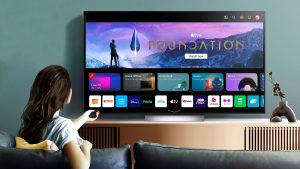In today’s digital age, it’s all too easy to get caught up in the constant distractions of our smartphones. Whether it’s mindlessly scrolling through social media, checking notifications every few minutes, or constantly being tethered to our devices, our phone usage can often become excessive and detrimental to our well-being. However, with the help of iOS Screen Time and Android Digital Wellbeing, you can regain control over your phone usage and cultivate a healthier relationship with your device. In this article, we’ll explore how to use these tools effectively and provide practical tips to spend less time on your phone in 2023.
Understanding iOS Screen Time and Android Digital Wellbeing
Both iOS Screen Time and Android Digital Wellbeing are toolkits developed by Apple and Google, respectively, to help users manage their smartphone usage. While they may have slight differences in functionality, their overarching goal is the same – to promote healthier usage habits and reduce distractions.
iOS Screen Time
Screen Time is a built-in feature on iPhones that allows users to monitor their device usage and set limits on specific apps and activities. By accessing the Screen Time settings in your iPhone’s native Settings app, you’ll find a wealth of insightful data about your phone usage habits. This includes your average time spent on the device, most used apps, and even a breakdown of notifications received.
Android Digital Wellbeing
Digital Wellbeing, on the other hand, is an app that can be downloaded from the Google Play Store on Android devices. It provides similar features to Screen Time, allowing users to track and manage their smartphone usage. With Digital Wellbeing, you can view detailed insights into your app usage patterns, set app timers, and even enable features like Bedtime mode to promote better sleep hygiene.
Taking Control of Your Phone Usage
Now that we understand the basic functionalities of iOS Screen Time and Android Digital Wellbeing, let’s delve into some practical strategies to spend less time on your phone in 2023.
1. Assess Your Current Usage
The first step in reducing your phone usage is to gain awareness of how much time you’re actually spending on your device. Take some time to review the data provided by Screen Time or Digital Wellbeing and analyze which apps or activities are consuming the most of your time. This will help you identify areas where you can make adjustments.
2. Set App Limits and Downtime
Both Screen Time and Digital Wellbeing allow you to set limits on specific apps or categories of apps. Take advantage of this feature by setting reasonable time limits for your most time-consuming apps. For example, if you find yourself mindlessly scrolling through social media, you can set a time limit of 30 minutes per day for that app.
Additionally, consider implementing downtime – a period during which only essential apps will be accessible. This can be particularly helpful during nighttime or designated focus periods.
3. Customize Focus Modes
One of the key features of both Screen Time and Digital Wellbeing is the ability to create custom focus modes. These modes allow you to tailor your phone’s behavior to suit different contexts or activities. For example, you can create a “Work” focus mode that only allows essential work-related apps and mutes non-essential notifications. By customizing focus modes, you can minimize distractions and optimize your productivity.
4. Minimize Notifications
Notifications can be major distractions that contribute to excessive phone usage. Take some time to review the notifications settings for each app on your device. Consider disabling or customizing notifications for apps that are not essential or that tend to grab your attention unnecessarily. By reducing the number of notifications you receive, you’ll be less tempted to constantly check your phone.
5. Establish Phone-Free Zones or Times
Creating designated phone-free zones or times can help you break the habit of constantly reaching for your device. For example, you can establish a rule of no phones during mealtimes or when spending quality time with loved ones. By setting boundaries, you’ll be able to fully engage in the present moment and foster deeper connections with those around you.
6. Practice Mindfulness and Self-Reflection
In addition to utilizing the tools provided by Screen Time and Digital Wellbeing, it’s important to develop a mindful and reflective approach to your phone usage. Take time to check in with yourself regularly and ask why you feel the need to reach for your phone. Are you seeking distraction? Avoiding discomfort? By understanding your underlying motivations, you can begin to address them in healthier ways.
7. Find Alternative Activities
One of the most effective ways to reduce phone usage is to fill your time with alternative activities that bring you joy or fulfillment. Find hobbies, engage in physical exercise, read books, or spend time outdoors – there are countless possibilities beyond scrolling through social media. By consciously choosing activities that enrich your life, you’ll naturally gravitate away from excessive phone usage.
8. Utilize Do Not Disturb and Focus Features
Both iOS and Android devices offer Do Not Disturb features that allow you to silence notifications and calls during specific periods. Take advantage of these features during focused work sessions, important meetings, or when you need uninterrupted time for yourself. By minimizing interruptions, you’ll be able to concentrate better and reduce the urge to check your phone.
9. Create a Charging Station Away From Your Bed
Keeping your phone away from your bed during the night can improve your sleep quality and reduce the temptation to use your device before sleep or immediately upon waking. Designate a charging station in another room or a specific spot that is not within arm’s reach. This simple change can have a significant impact on your ability to disconnect and prioritize rest.
10. Seek Support and Accountability
Changing habits can be challenging, so it can be helpful to seek support from friends, family, or online communities. Share your goals with others and create accountability systems to ensure you stay on track. Consider joining digital detox challenges or using apps that encourage healthy phone usage habits. Remember, you’re not alone in this journey, and having a support system can make a big difference.
Conclusion
In conclusion, reducing phone usage and practicing mindfulness in the digital age is crucial for our overall well-being. By utilizing the tools provided by iOS Screen Time and Android Digital Wellbeing, as well as implementing practical strategies like setting app limits, customizing focus modes, and establishing phone-free zones, you can regain control over your smartphone usage. Remember to approach this process with patience and self-compassion, as breaking habits takes time and effort. Embrace the opportunity to reconnect with the present moment, cultivate deeper connections with others, and engage in activities that truly enrich your life.



No comments! Be the first commenter?